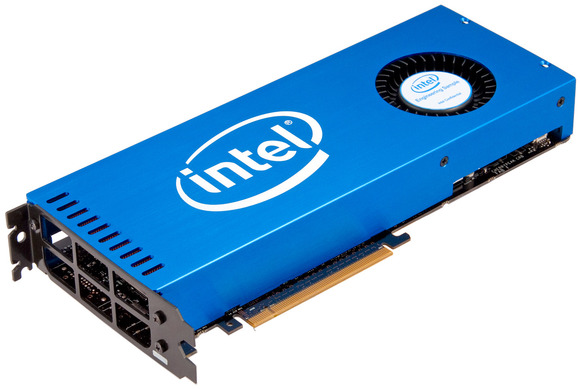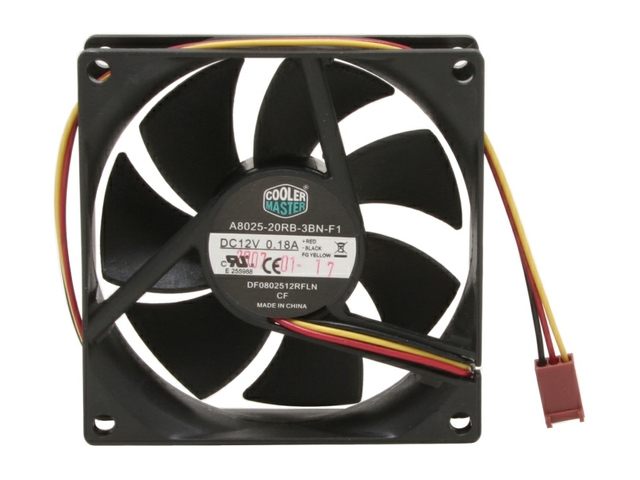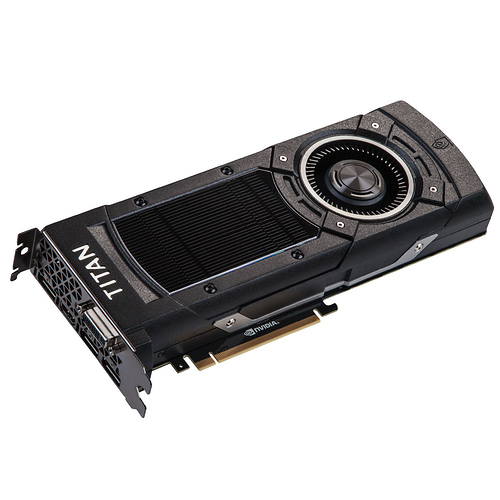Buying older Xeons for dual slot boards and making like 3 of those is probably the best home render farm solution.
That’s nonsense. These devices have a TDP of 245W, which is on par with high-end GPUs. You cannot run them without external active cooling. They are designed to be installed into a rack server with builtin fans, like you can see here. There are variants with active cooling designed for workstations, but I haven’t seen any of those near 300$. Otherwise, you have to get a setup like this:
Attachments

No, you’re nonsense. Here is a high end GPU with a TDP of 250W.
Oh what’s that? A simple blower fan which sucks air through the card? The very same design on all the reference cards? Gee It must not cost that much!
BUT WAIT!? COULD IT BE?
Not yet another simple blower fan!?
Aw poor fellah, your pi didn’t come with one and you need some cooling!?
WHAT’S THIS?
http://www.newegg.com/Product/ProductList.aspx?Submit=ENE&DEPA=0&Order=BESTMATCH&Description=80MM+FAN&N=-1&isNodeId=1
No way, a cheap fan you can bootleg to your pis if you feel so inclined!? Might I add the fan in the picture you attached is PUNY.
Attachments


I have no idea what your point is. Yes, you can cool a passively-cooled Xeon Phi with an external fan. You have to. That’s the point of my post. You made it sound like these could run passively:
“The fact the one you can buy comes passively cooled means it’s not putting out a terrible amount of heat.”
Yeah, like that costs $1000 plus. No.
I don’t know what this is referring to, but the actual retail price of any newer Xeon Phi is in the thousands (with fan or not). These cheap Xeons are old surplus units. Once you pay the “real” price, these devices don’t look very good regarding price/performance. Unlike GPUs, Xeon Phis have no cheap version for the mass-market consumer.
The point is thermals is really no argument as it can be easily handled if necessary. If, these became mainstream, they’d put blower fans on them when necessary and it would not cost hardly any more.
As it stands most software does not utilize the multi cores in the standard CPUs we have now.
Blender may be one of the few however I know not all of the functions of the software uses multi cores.
Most soft ware tasks the hell out of the first core and some of the second and never touch the rest.
Direct X 12 is one that doesn’t utilize more than first and second core.
For now the best cycles performance is to get a video card that has more CUDAs and a the fast 2-4 core processor.
Getting a 8 core processor that has a slower clock speed than a 2 is a waste.
You mean DX11.
Hopefully there is future development for Vulkan API
apparently there have been multi core improvements for Direct X 12.
This would be something that blender developers would need to do to make the xeon phi produce faster rendering times with cycles.
Convert CUDA codes to OpenMP.
As far as I can tell the xeon phi does not have CUDA cores.
Just in case anyone does not know about the NVIDIA Tesla check it out.
Always impressed about the language members use against each other here!
I can’t wait till this and unified memory for cuda become a thing and then people will learn that not all processors have the same number of pci-e lanes.
Phi for Blender and Cycles is, currently, useless. I have family at Intel, I’ve built and tested several custom ICC Blender builds with various Phi cards over the years. The results have been so lackluster that they weren’t even worth mentioning. Without serious redesigning of the various threadable systems inside of Blender, it’s a moot point. Even now, the parts that would really benefit from massive parallelization in Blender don’t even have the most basic level of multithreading.
The key to performance with the Xeon Phi is not threading, it’s utilizing the extra-wide (512-bit) SIMD lanes. There’s a few options for this:
- write intrinsics by hand in C/C++ code
- write C/C++ for which the autovectorization in ICC kicks in
- write ISPC code (Intel’s own language for data parallelism)
- use OpenCL
Since the Xeon Phi is an OpenCL device, it should at least in theory already work with Cycles.
Ok, I have some issues with your post. First, while you may have family at Intel, I find it very doubtful you have “…built and tested several custom ICC Blender builds with various Phi cards over the years…” There have been a total of 2 Xeon Phi available and one of them was only released this year. Second, even if you had somehow managed to get either a KNC or a KNL, It’s doubtful you would have the systems available to support them. You can just pop them in to your ASUS motherboard, The KNC was a PCIe Card that required a very specific motherboard to support it. The KNL, is a single package bootable CPU that also required a whole new chipset to support. And the DAP units just started shipping last QTR. Additionally, it’s unlikely that your “family” just grabbed up a sample and brought it home for you to play with. The process for getting samples is VERY specific and without a business need, you’re not getting one out the door.
Finally, I’d love to hear your results and the strategy you took to “custom build” your blender builds, did you use offload for the KNC or hybrid. How did you structure the MCDRAM usage for KNL? Did you use Flat mode, cache mode or hybrid mode? How did you vectorize the code to take advantage of SIMD and what were your impressions of AVX512 and did it provide any improvement having the wider vector lanes?
I am trying to be polite, but really…
@mtroute If you look where he lives there is an Intel office. http://www.intel.com/content/www/us/en/location/usa.html
Of all the things he could lie about why would he lie about something this nonsensical and specific?
…and wasn’t it stated clearly? The machine is not the problem, the code is.
Blender is ran on a shoestring budget, so as a rule they will not adapt to new hardware and Operating Systems unless said hardware is already in wide circulation and adopted, and is of practical viability.
Do these Phis look cool and have potential? Yes.
Are they in wide circulation and adopted by the pc community at large? No.
Now I’m sure there are some nerds out there who have bootstrapped some applications to them just because they could, but that does not mean that said bootstrap is a production ready product.
The newest generation of Phi includes an x64 system chip and I think that is the direction that Intel is going here. As I understand it, an X200 socket chip should run Blender provided that Blender can recognize 64 cores on a single chip, and you have $2500-6500 plus another $2K for the workstation lying around. And yes, Supermicro does have a an x200 workstation already on the shelves.
But supporting the old accelerator chips is probably a dead end and I suspect that once the x200 chips get moving they’ll probably abandon that line of thought entirely.
As I understand it, however, getting a phi to work with OpenCL is trivial. If anyone can confirm:
“the Xeon Phi is not registered as a GPU but as an ACCELERATOR, this confuses some simple OpenCL samples that I have seen as well. Luckily, only a very minor change is usually needed to get the code to recognize and use the Xeon Phi. And, wiht proper coding the Phi will work out of the box”
https://software.intel.com/en-us/forums/intel-many-integrated-core/topic/536928
I’ve been curious about these older Xeon Phi as well, and have been tempted to pick one up myself. Houdini should see them, I’d imagine, but once again I can’t really get a straight answer. I know that Realflow should.
X64 is 64 bit, not 64 cores/chips afaik. X86 was 32 bit. you can get windows, linux, and probably mac os in X64 and X86 as well as what ever powerpc was called
